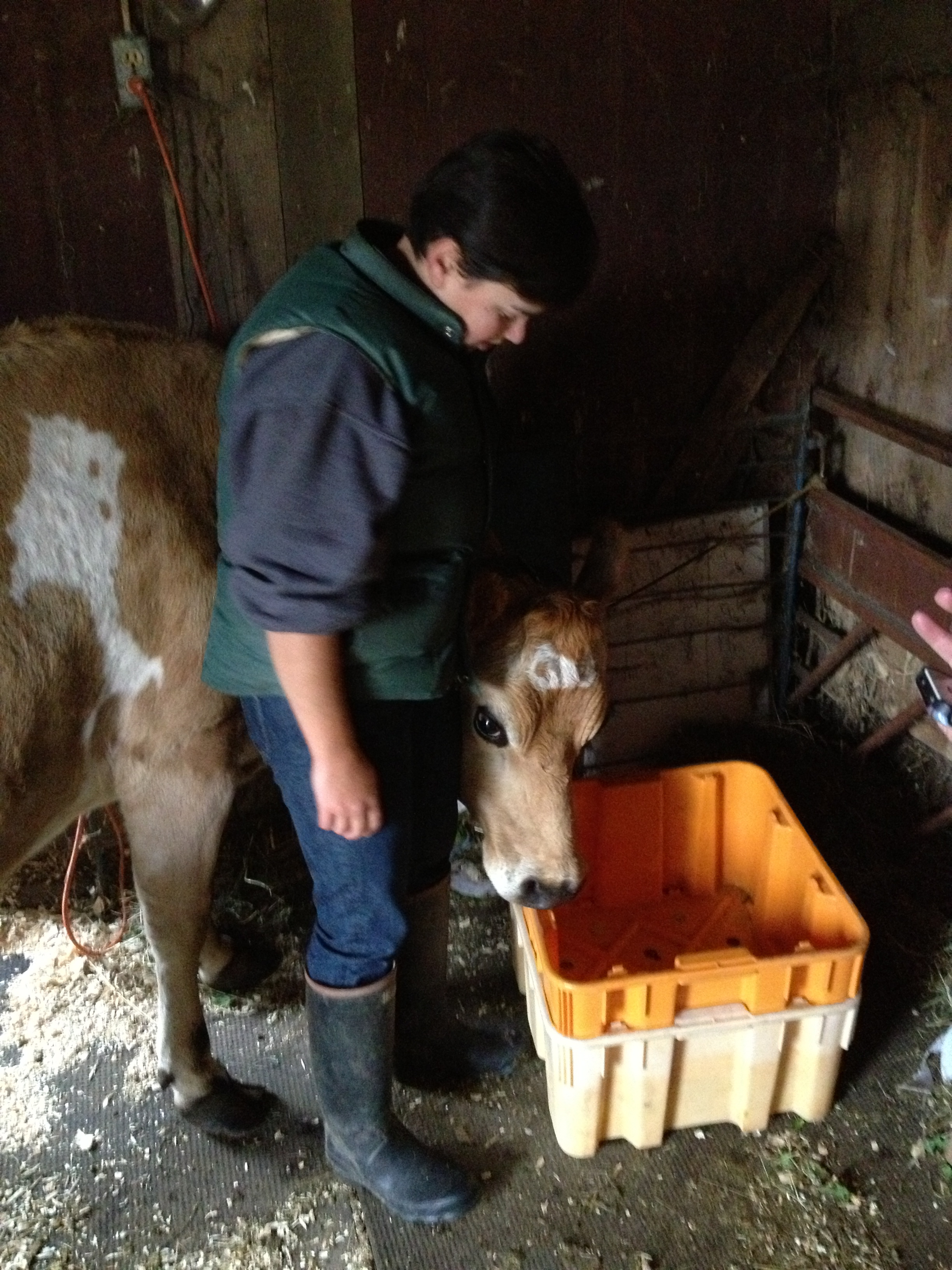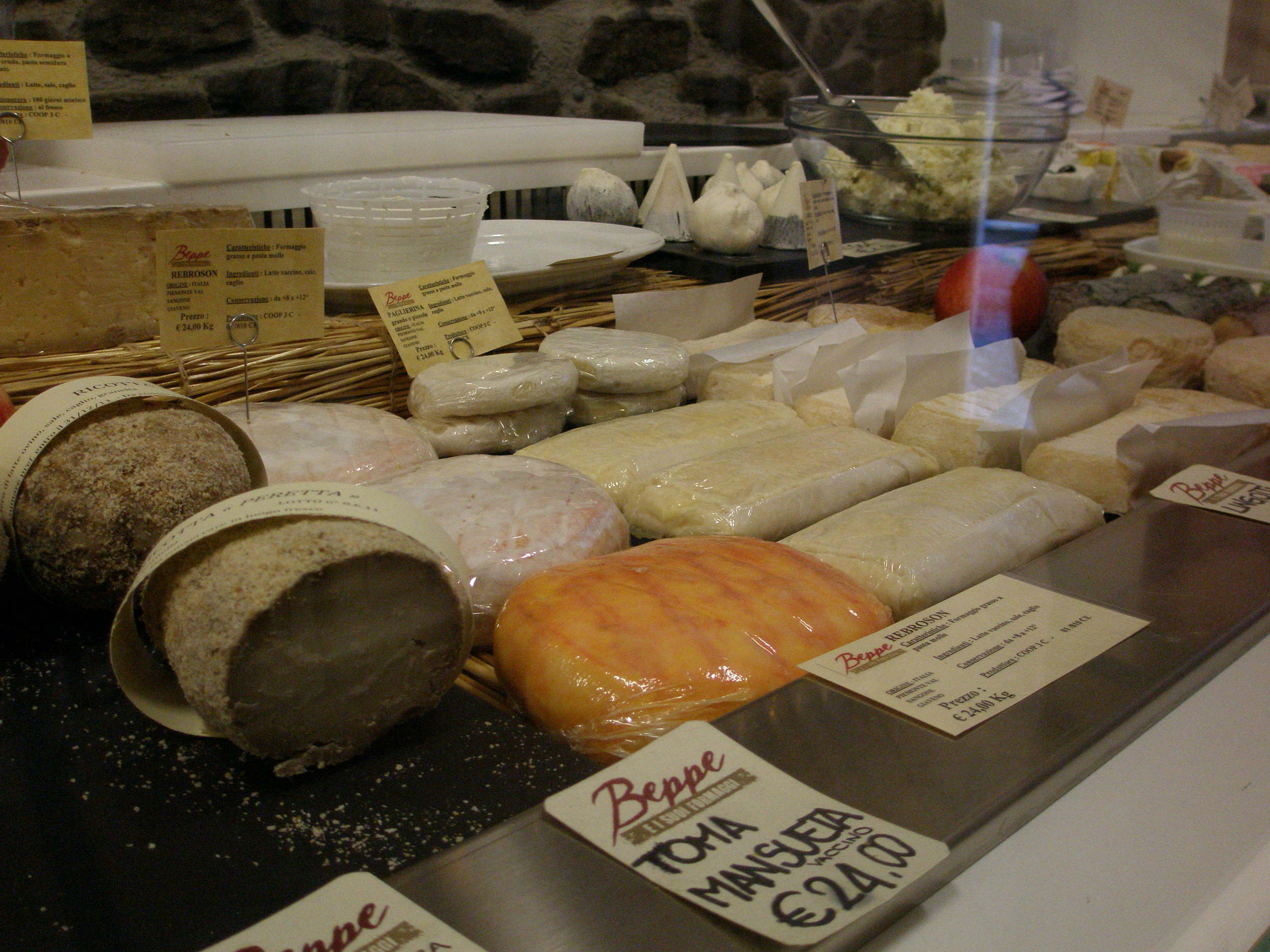And so here I am, hoping that a monster named loses its might. I sit wrangling an essay from my fingers through sheer force of will, hoping that by doing something that I’ve been putting off for a month will open the floodgates of usefulness and productivity.
Read moreYear in Review
It’s April, folks! That magical time of year devoted almost entirely to getting your shit together. For starters, it’s tax day today, the cornerstone of April togetherness. April is also for spring cleaning, to which I’ve devoted myself for these two weeks at my parents’ house. On the farm, April brings hours and hours in the greenhouse hunched over seed trays, and in the northern climes, a never-ending game of cat and mouse with the weather (case in point: yesterday’s snow showers). Anyways, as we all prepare for the real coming of spring, and gear up for the start of the farming season, I’d like to do a quick year in review here on the blog. Leaving aside the weekly “Farm Week” posts, here’s a look back at some of the things I’ve blabbed on about over the past year:
Farm-related musings:
- A reflection on being a planner
- A long reflection on young farmers dealing with climate change and a uncertain future
- A rumination on Joel Salatin and other “prophet-farmers”
- Holistic Financial Planning, the online course through Cornell Cooperative Extension
Food-related musings:
- An appreciation of the well-tended cheese counter
- An appreciation of MFK Fisher, followed by some quick tips on thrifty delicious cooking
- A dispatch from Ann Arbor, and a rumination on waitressing in the age of the foodie
Books I read, then wrote about:
- Thoughts on 1951’s A Practical Guide for the Beginning Farmer
- Kelly Klober’s Dirt Hog
- Mark Shepard’s Restoration Agriculture
- Jonathan Safran Foer’s Eating Animals
- Wendell Berry’s The Unsettling of America
Things other people wrote and I liked:
- Two beautifully written nuggets from real writers
- A long quote from Wendell Berry on what constitutes a healthy farm
Random things I wrote:
- A dramatic rendering of conversations with Argentine family about farming
- A special Farm Week post, consisting of a poem inspired by the soggy season
Conferences I went to:
- A dispatch from the 2014 MOSES New Farmers Summit
- A recap of the 2013 National Young Farmers Conference
- The 2013 MOSES conference and the genesis of the website
Other fun things I did:
- An exciting weekend with a country fair and the most delicious pork I’ve ever dug out of the ground
- A captioned slideshow from the Greenhorns solstice mixer up in Keeseville, NY
New Farmer Summit, April 3-5, 2014
Nothing get you energized in the spring than spending three days with 150 other people who are also looking forward to getting their hands dirty as soon as possible. I was lucky enough to squeeze in another conference (read about the last one here) before the season starts again in earnest. Once again, the three days were packed with new information, though-provoking conversation, and lots of awesome people. There’s really nothing like knowing that you could walk up to any person in a room and almost instantly engage on a thoughtful and passionate level about any number of things.
The summit was hosted by Primrose Valley Farm in Belleville, WI, whose amazing event space provided the perfect setting. A smaller group of farmers arrived a day early for a bus ride to three different farms in the area. We started out with a tour of Primrose Valley’s state of the art greenhouse and wash and pack area. A visit to Grassroots Farm provided the perfect counterpoint, with a smaller scale and a more bootstrap approach. We ended the tour at Inn Serendipity, a wind- and sun-powered bed and breakfast with a small intensive vegetable plot.
We rounded out the day with a BYOB meet and greet in downtown New Glarus, one of the best towns in the world for B-ing your own Beer! There I met up with Dela and Tony Ends, who had generously offered to host a few of us at their farm, Scotch Hill Farm, over in Brodhead. Over the next few nights and mornings, we quickly realized that we had signed up for a supplemental ongoing workshop from two delightful and kind organic pioneers. Their CSA is going on 20 years!
Friday and Saturday were chock-full of great workshops, working lunches, panel discussions, amazing local food, and even a square dance with a live band and caller. Nobody wants me to go into detail on each and every workshop, so instead I offer you another little list of tidbits from the workshops I attended this weekend:
- From Jackie Hoch of Hoch Orchard: a “value-added product” is hardly ever more valuable than direct-marketed fresh fruit, but are a valuable way to reduce loss from imperfect or imperfectly timed fruit.
- Biologically active soil is the pest preventative measure for safer food, as manure gets broken down almost instantly.
- Special events like Christmas markets are especially good for value-added products, which have to be unique enough to stand out from the competition but not too crazy for people to want to buy.
- “Chick-saws” are small-scale mobile coops for egg layers that can be moved by one person (like a rickshaw) instead of a tractor.
- Greenhouse heating is a high expense, so make sure you’re maximizing your use - you only need walkways when you need walkways, so rolling tables can be useful to use every possible square foot.
- The USDA’s NRCS and FSA offices have special incentives for beginning, women, and minority farmers (and a severe acronym addiction), including grants and cost-sharing, and low-interest loans.
- While record keeping may seem like a chore associated with organic certification, if you incorporate data logging into your workflow, you not only spend less time on paperwork, but you’ve created systems that can be helpful for you above all.
- Most farmers’ online marketing headaches can be solved by getting listed for free on a few sites - even more important than having a fancy website or a Facebook page.
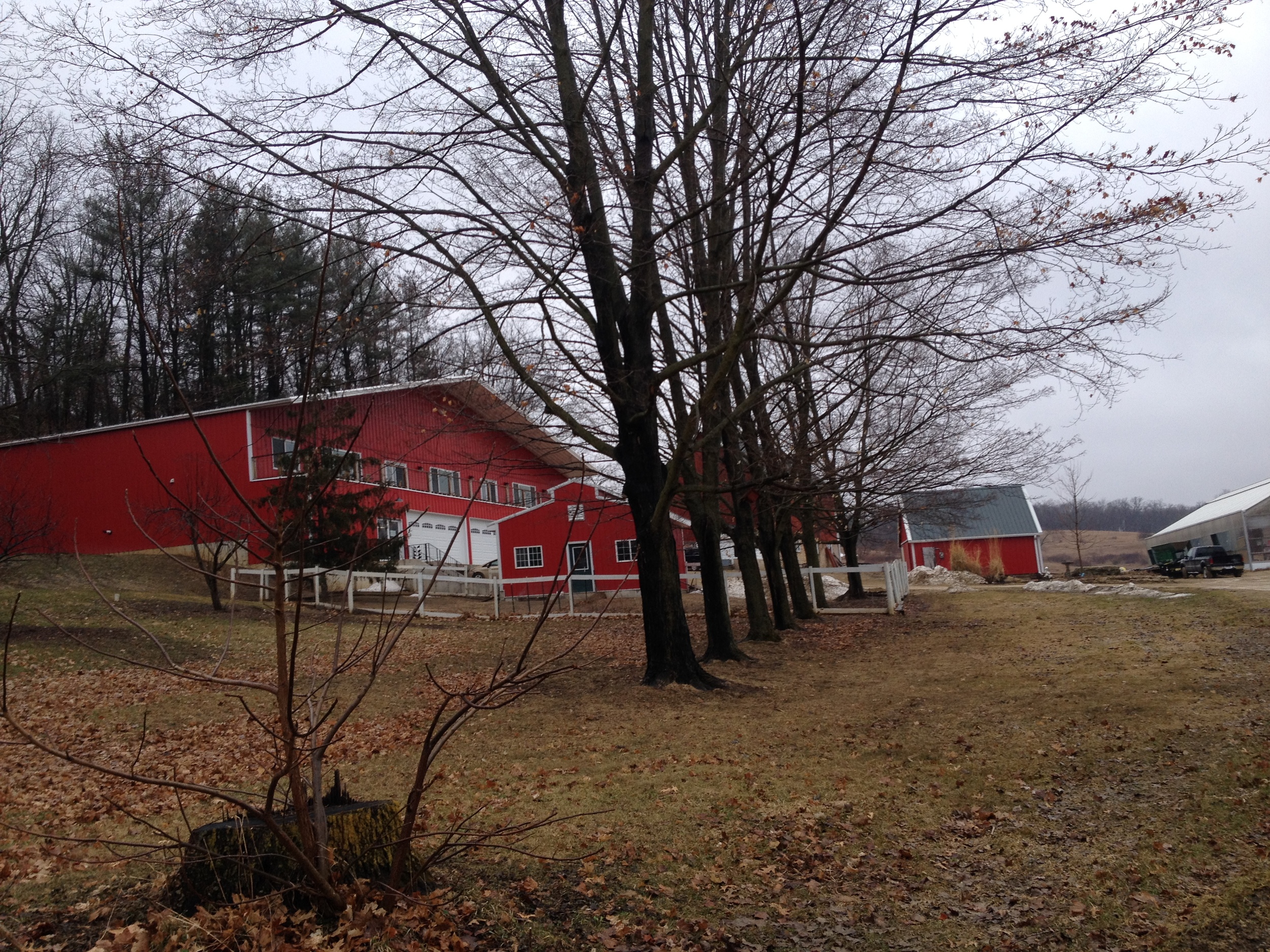

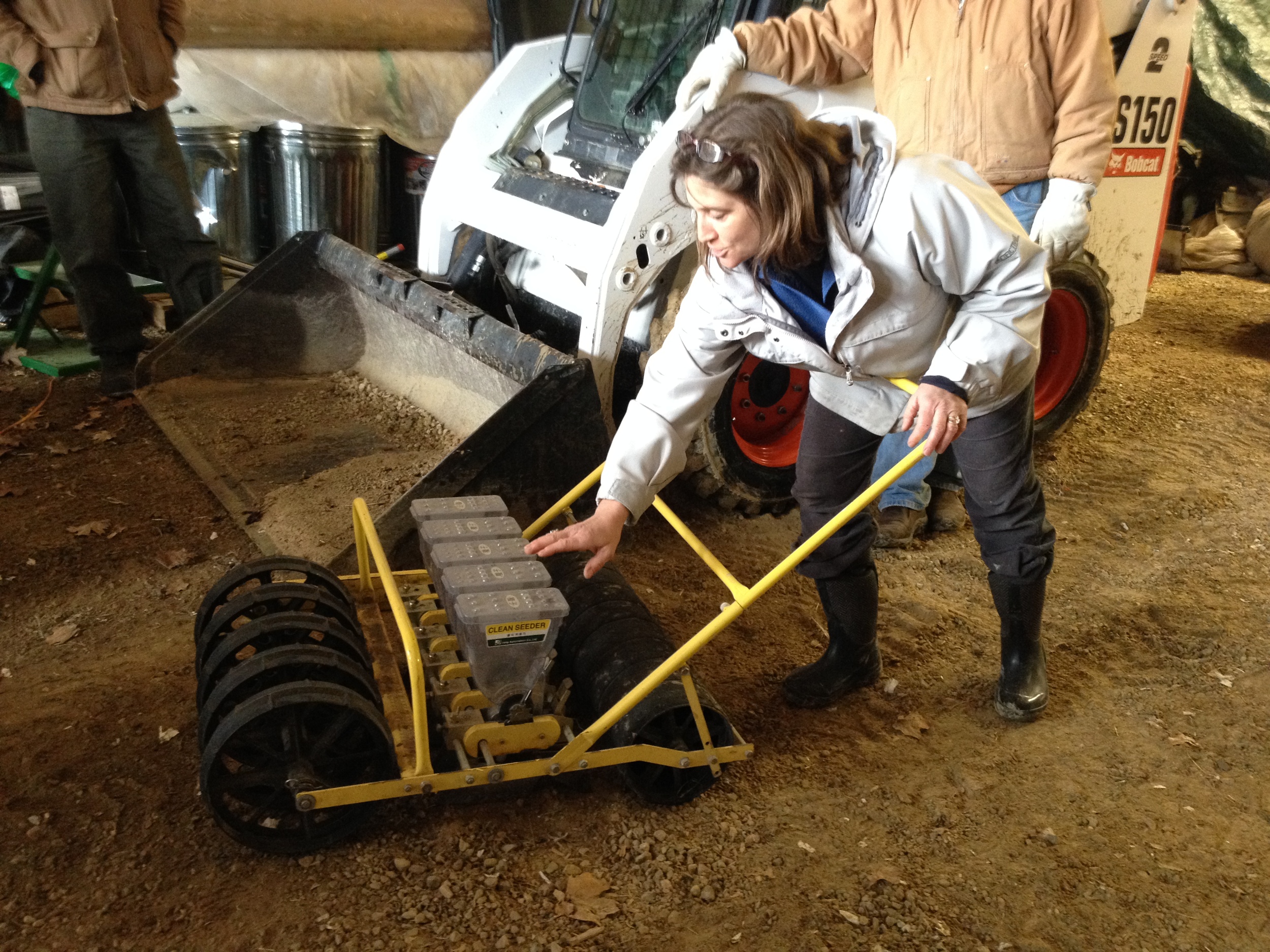
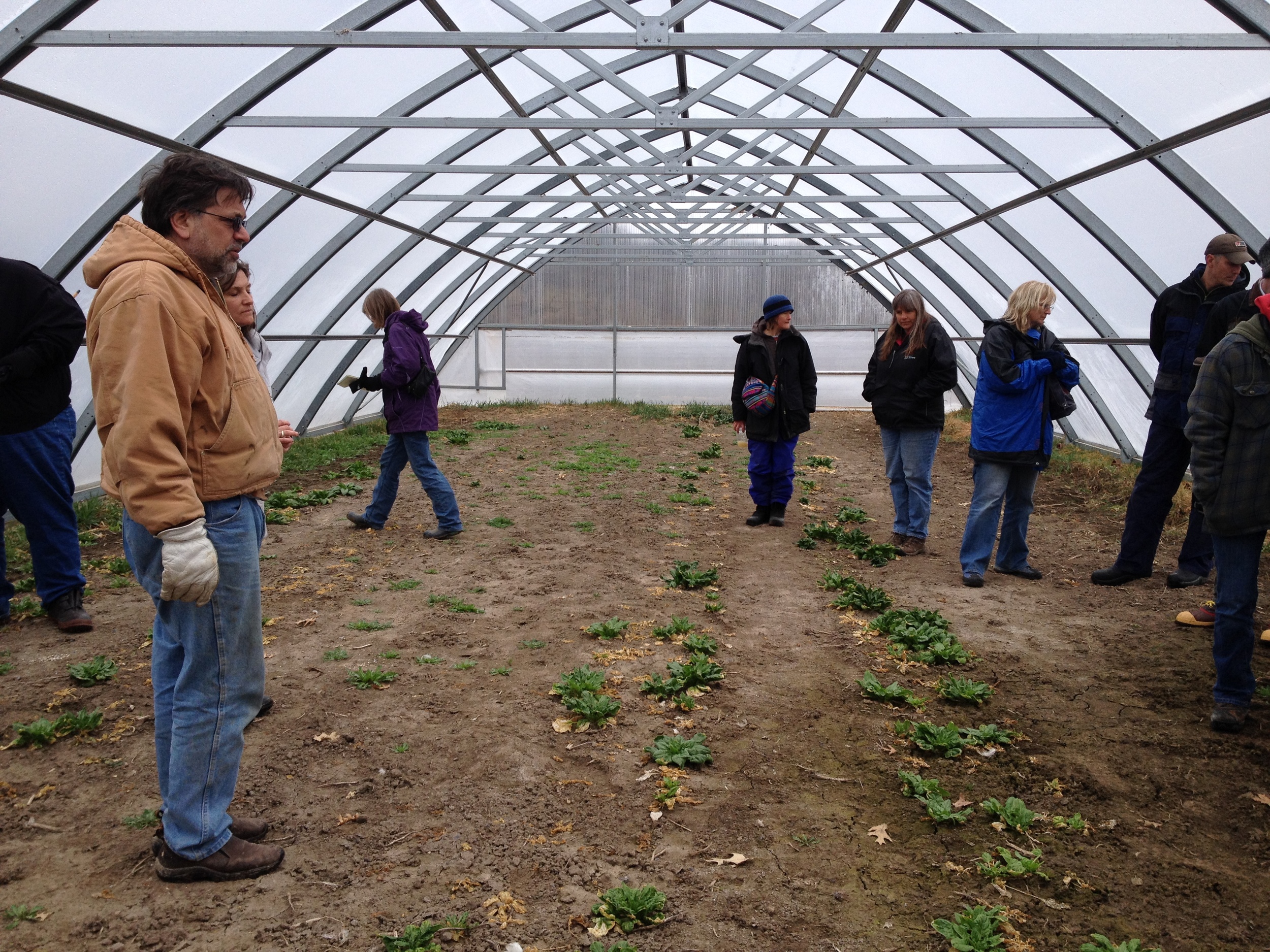

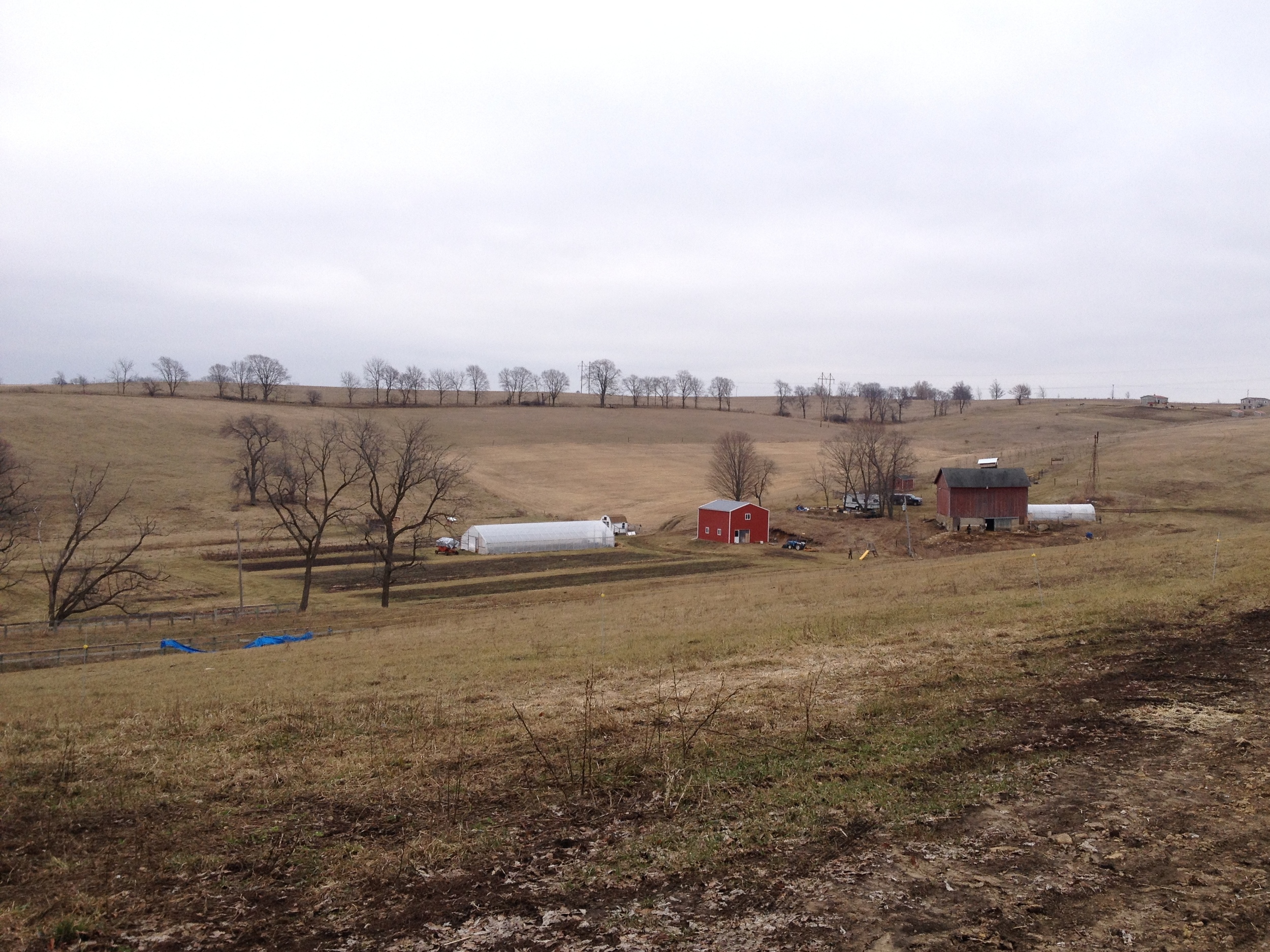

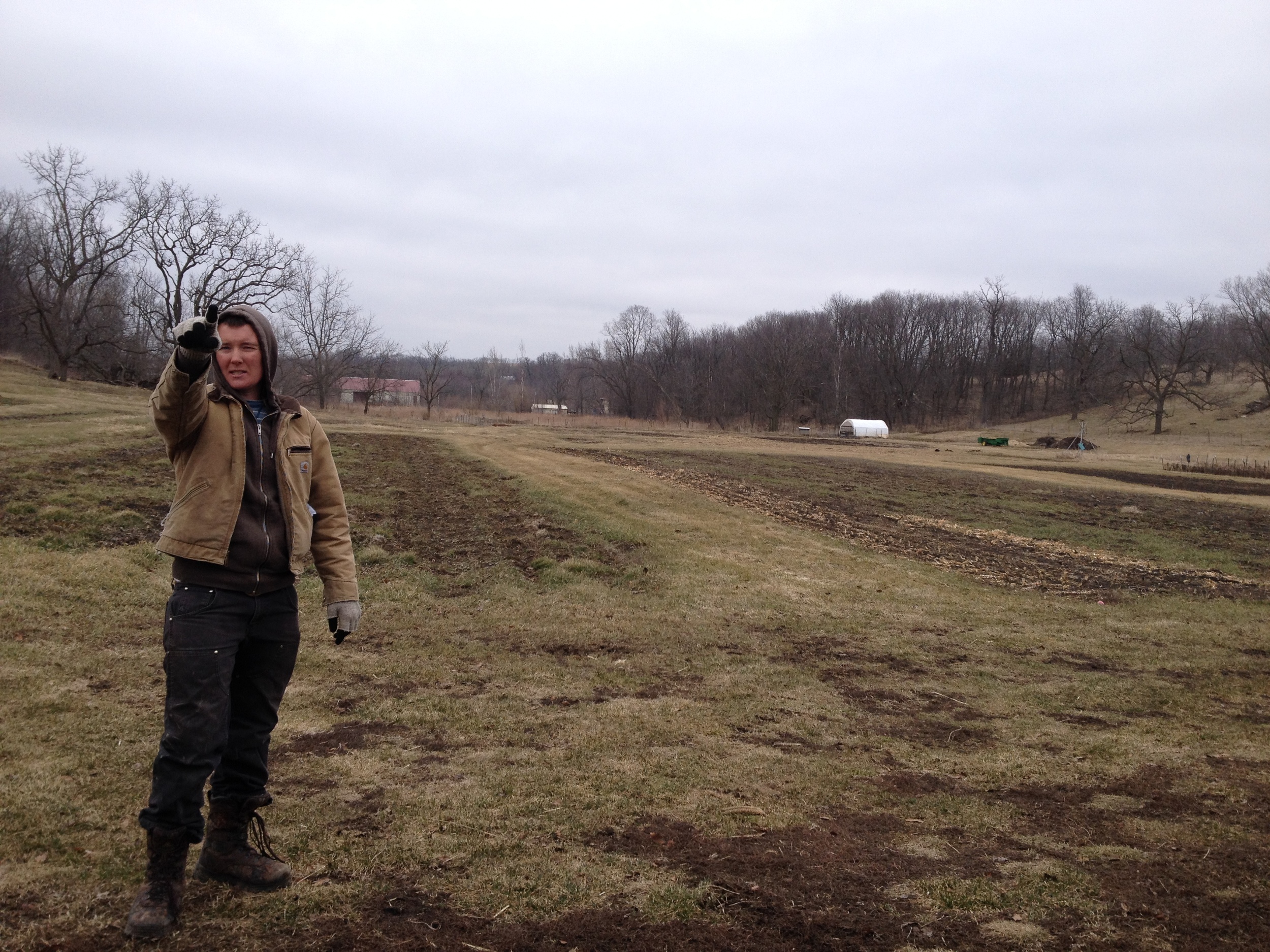



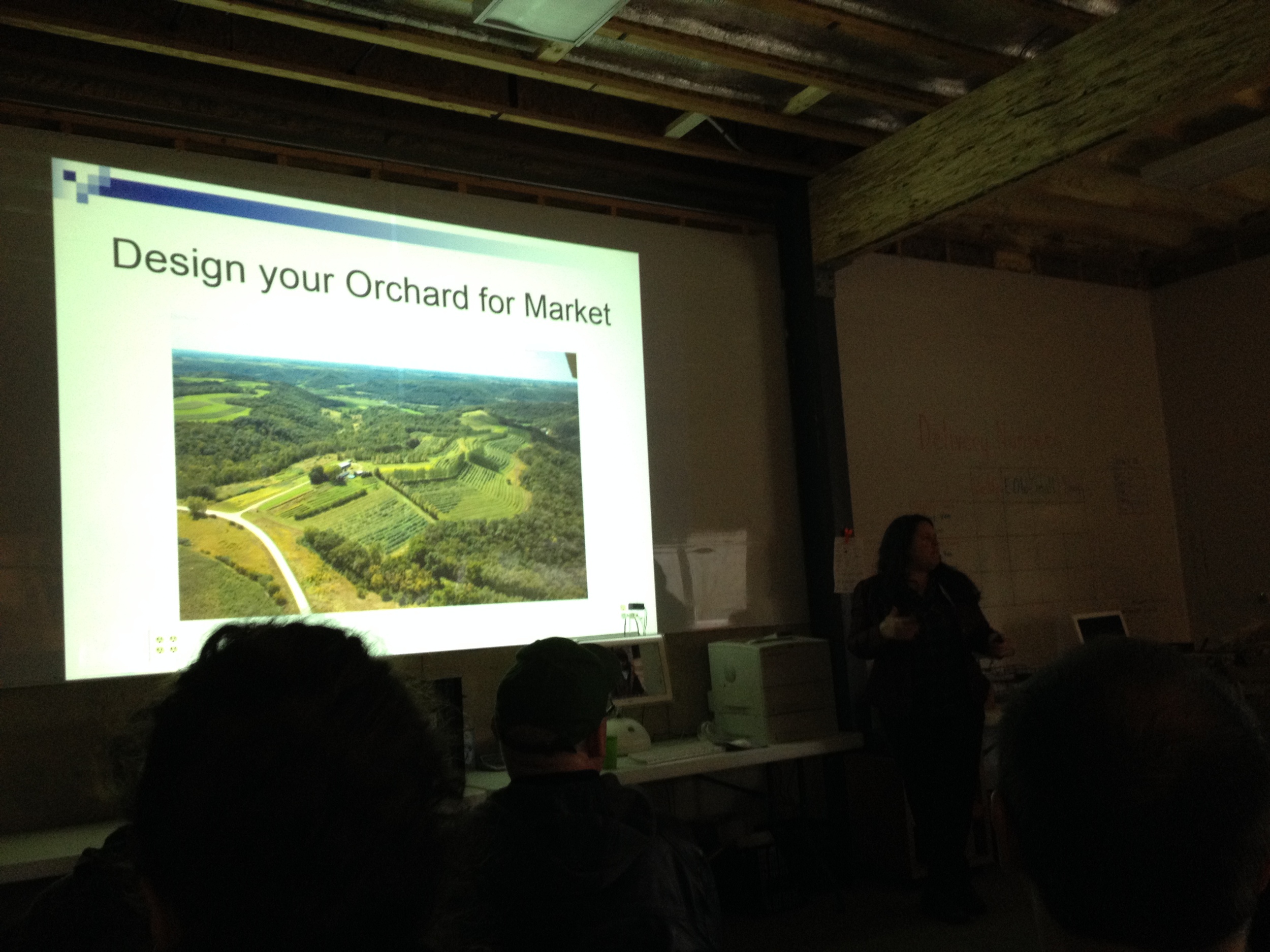
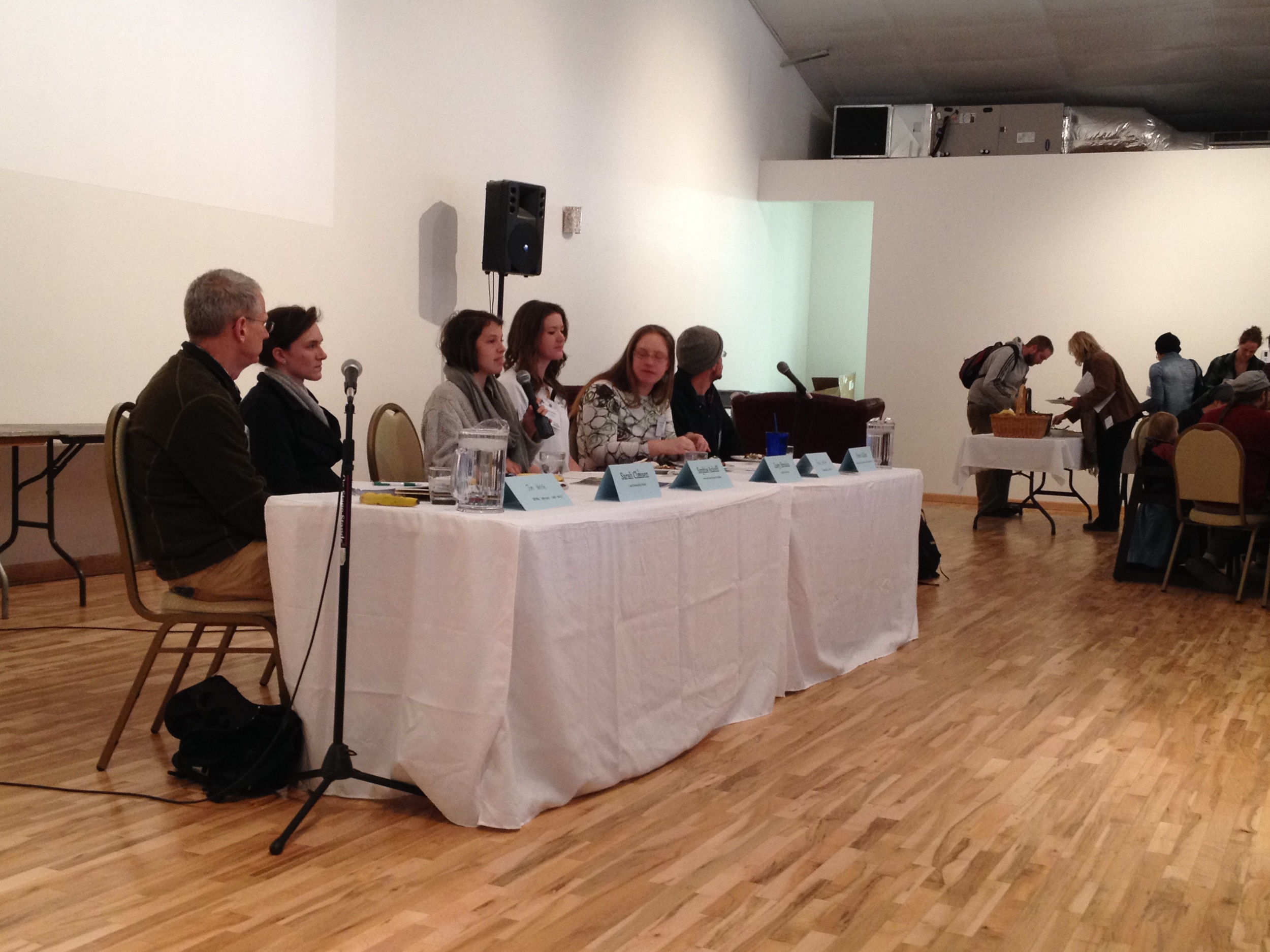
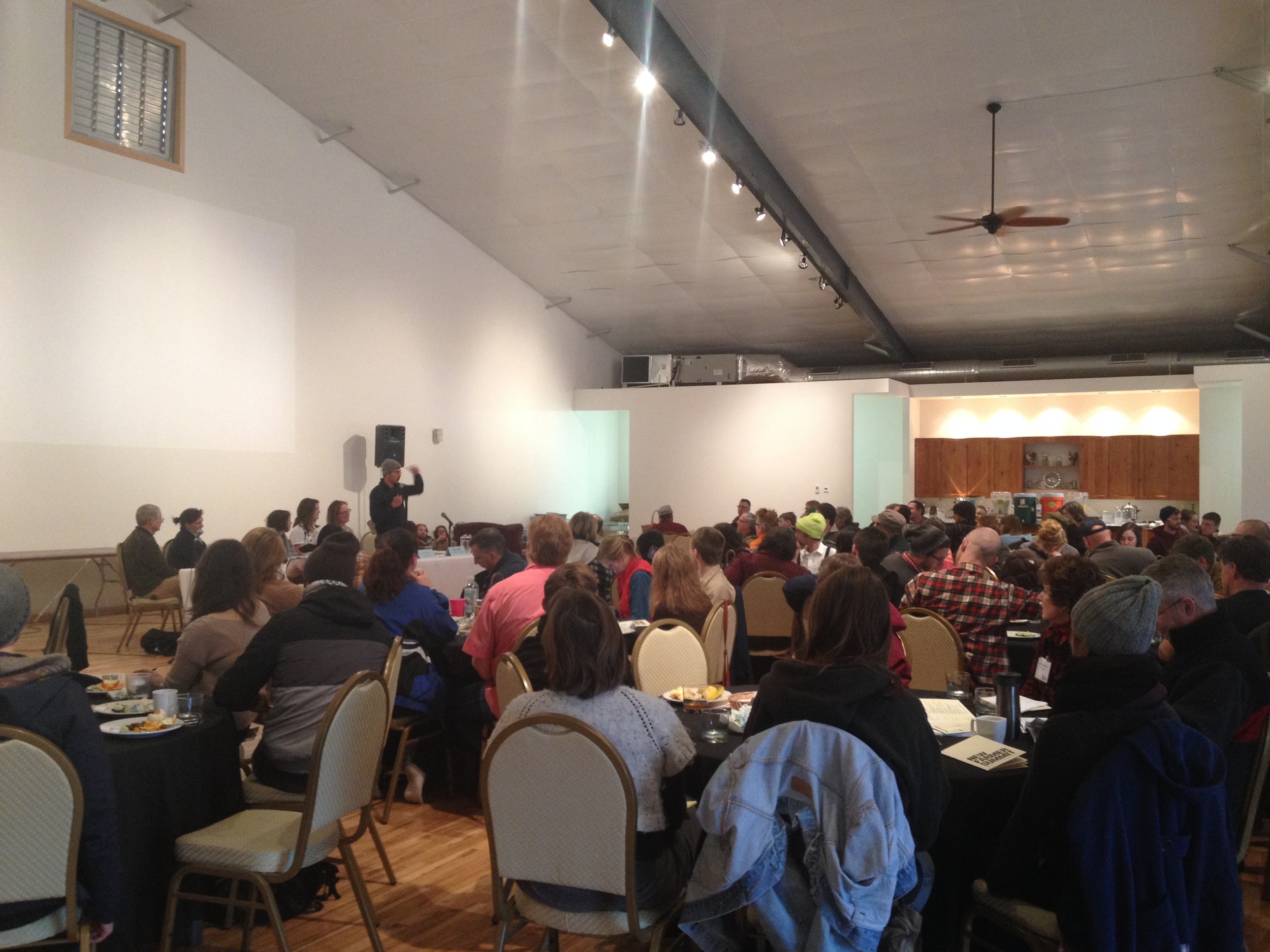
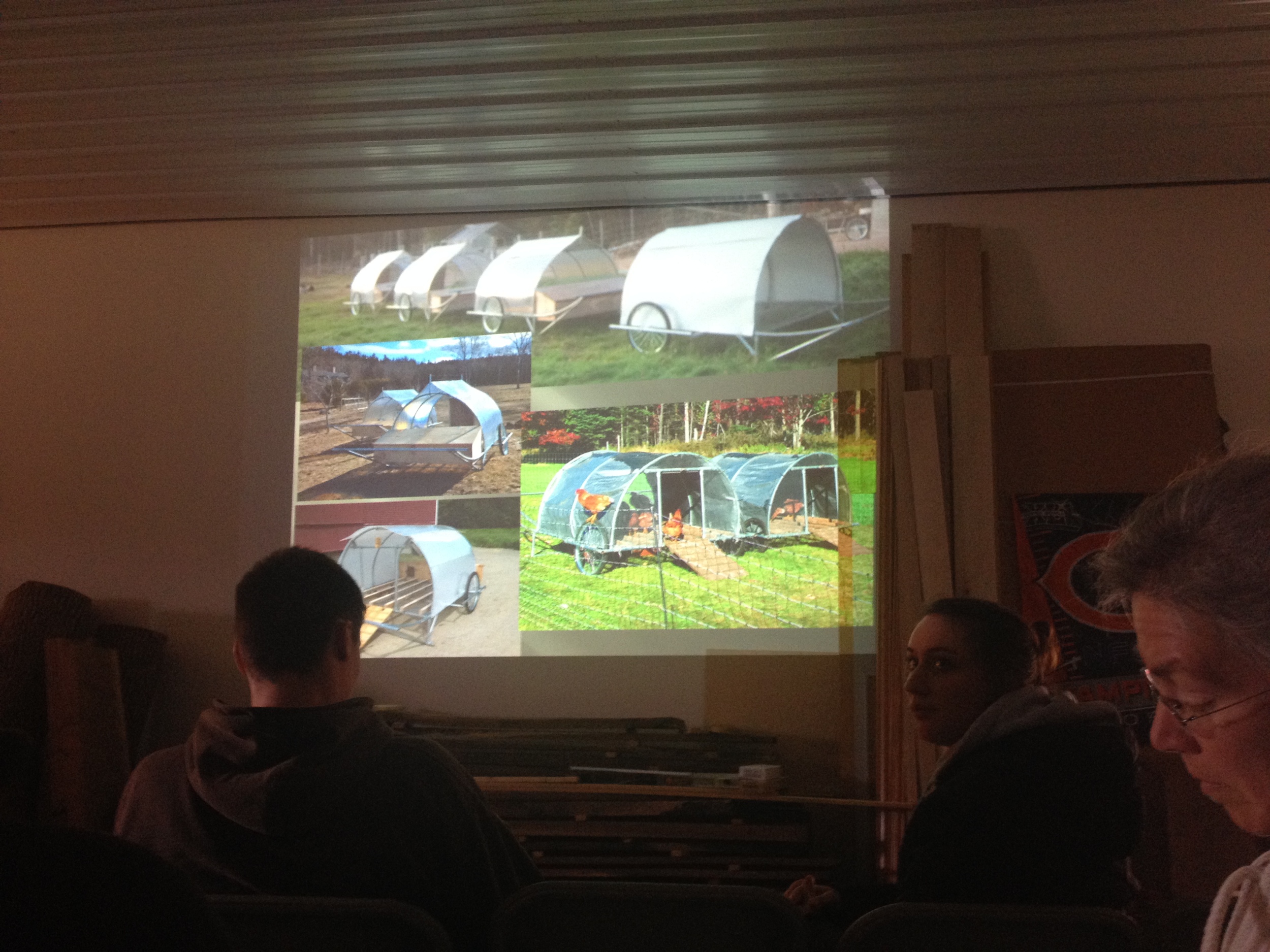


On the Cheese Counter
A visit to your local cheesemonger, if you’re lucky enough to have one worthy of the name, can be a many splendored thing. A good cheese counter is not necessarily the one with the most cheeses or the most expensive cheeses. A good cheese counter has one or several people behind (or in front of) it who delight in introducing you to a new cheese, finding the perfect cheese for the occasion, and maintaining (curating, even) an assortment of cheeses to satisfy any range of discerning and curious customers. A delightful cheese (en)counter this afternoon prompted me to think about five amazing cheese counters that have been crucial in my enculturation (hehe) as a major turophile. Obviously, a childhood full of good Wisconsin cheddar and a few months making and selling cheese did plenty to feed my obsession, but today I offer to you a brief history of my ongoing love affair with cheese and cheesemongers.
1. Formaggio Kitchen, Cambridge, MA ca. 2009
While my college years saw my discovery of the delights of Indian food, the inexhaustible range of craft beers, the joys of semi-disorganized wine tasting (Floreat Eliot House Wine Society!), one of the most culinary life-changing experiences during my time in Cambridge might have been a series of bike rides down Huron Avenue to the renowned Formaggio Kitchen. Leading the way was my initiator into the world of MFK Fisher, IPAs, and ripe cheeses, one Zach A. We lock our bikes outside and enter a small storefront packed with all that is good in the world. A cheese and deli counter in the first room, stacked high with rounds and wedges, flags denoting age and provenance sticking out, almost grazing the bottoms of the whole hams and salamis hanging from the ceiling. Zach, having worked at a cheese counter back in Philly, took charge, speaking with the cheesemonger with authority, tasting, questioning, selecting the perfect cheeses for our needs. It was the first time I had seen such a thing. Sampling five cheeses to choose two? It seemed revolutionary. In return visits, Zach continued to be the vocal, knowledgeable interlocutor, but slowly, as with beer, wine, and ethnic food, I began to learn my tastes and the language necessary to convey those tastes to the person across the counter.
2. Pastoral Artisan Cheese, Chicago, IL ca. 2011
The year after college, living with three lovely ladies in a lovely lakeside neighborhood in Chicago. Local cheese counter only three short blocks away. Periods of employment, underemployment, unemployment, and overwork. Whether I was just looking to spend a few dollars on an afternoon treat or shopping for the perfect accompaniments to our midwestern iteration of Wine Society, the cheesemongers were always ready to find the right cheese. Not quite as overwhelming as Formaggio, the smaller scale of the counter meant that on a quiet Thursday afternoon I felt comfortable enough to ask a few questions, taste a few cheeses, and make a purchase. No stranger to budgets, these young mongers were always willing to cut me a tiny slice of an expensive cheese, and I grew to enjoy going in with a specific question. What will pair with the dry German wine I have in the fridge? What about my beet chutney? My enthusiasm for Pastoral was only briefly dimmed when I interviewed for a job as a cheese counter attendant and was rejected after a three-hour “stage,” including a pop quiz at the end in which I was expected to name and describe all of the cheeses I’d tasted. But in the end, every occasion was an occasion calling for cheese.
3. La Cave a Fromage, South Kensington, London, ca. 2012
My nine months in Europe was full of unforgettable cheese experiences. That fresh pecorino sandwich shared with two friends sitting in the stoop of a centuries-old house during the annual chestnut festival. I’ve been trying to relive that cheese for the two years since with no luck at all. Funky talleggio, heavenly burrata, creamy gorgonzola dolce, farmstead toma. Freshest mozzarella di buffala straight from Naples eaten with the greenest, zestiest olive oil from olives that only three days before I had stripped by hand from the laden branches of a gnarled tree. In South Kensington, I learned to ask my now-favorite question: what’s ripe? I confirmed a long-held suspicion that there are few cheeses that I will not eat with some gusto, and that true cheese connoisseurship can become a very expensive undertaking. I discovered that I relish a soft-ripened cheese right on the brink of spoilage, when the insides ooze slowly at cellar temperature and faster in a warm kitchen, eaten in (I imagine) a French style, daubed on an airy, crusty baguette. The cheesemonger knows which cheese is at its prime and which is about to pass it, and sometimes they’ll even cut you a deal on the very ripest.
4. Rubiner’s Cheesemongers, Great Barrington, MA, ca. 2013
During my stint last season at Chubby Bunny, every other Friday was payday, which meant every other Friday involved a trip up to Great Barrington to deposit our paychecks and go out on the town. Sometimes this involved live music and a beer at the Gypsy Joynt, sometimes sourdough pizza and beer at Baba Louie’s, sometimes a quick pass through the co-op before heading back out of the Berkshires into the wilds of northwest Connecticut. When we got to town before six, that meant a duck into Rubiner’s before closing time. A smallish fancy shop in a partly-fancy smallish town, the visits to this cheese counter were less about the actual cheesemonger and more about the farmstead products for sale around the counter. Not that I was actually buying much (again, fancy store), but I was definitely taking mental notes. Cured Italian salamis the size of your thumb for $2 a pop - quick to cure, easy to sell at a farmers market! The rustic-chic aesthetic that accompanies a local artisan product for top-dollar. Rubiner’s offers a farmer discount, which is novel and much-appreciated, but more important for me than my meager purchases was the food for thought about my own potential approach to marketing my products. Can I sell a few things to rich people at justifiably high prices while growing the majority of my food for a local customer base at affordable prices? Every cheese counter, gourmet shop, co-op, and farmers market stand is now a study in image, aesthetics, labeling, and marketing.
5. Zingerman’s Delicatessen, Ann Arbor, MI, ca. 2014
In my many trips back and forth across the eastern half of this expansive country, I’ve made it a habit to punctuate the drive with a few days in Ann Arbor, thanks to the presence of Bianca, almost-doctor, appreciative food audience, and official photographer. Each trip was marked with a visit to Zingerman’s to marvel at the selection, taste a few cheeses and make a small but delicious purchase. Now, as my winter in Ann Arbor comes to a close, it seemed only fitting to celebrate with cheese. So, on this cold but sunny Tuesday afternoon, we walked in with a mission, and the cheesemonger was happy to accept it. We wanted to have a great little (indoor) picnic for $30 or less, mostly cheese, a smidge of meat. “Are you in a hurry?” Asked a totally dedicated Ben. Over half an hour later we had sampled a handful of cheeses and narrowed it down to the perfect combination that combined my love for soft, gooey, or funky cheese with Bianca’s preference for hard, nutty, Alpine-style cheeses. He sliced us the most delicate of slices in keeping with our budget. We sampled olives, and took a bit of two different kinds. He tried to sell us cipollini in balsamic, but my homemade ones were better. I sampled cured ham, including a slice of Jamon Iberico that I believe is the closest to gustatory perfection anything has ever been. (Ben said when I finish my first permaculture prosciutto, I should bring some by for a tasting.) A thin-sliced paesano roll completed the spread, and when we went to pay, we discovered that we’d stuck exactly to our budget! $29.56, which delighted Ben just as much as it had us when we gave him one last good-bye on the way out the door.
Today’s visit to Zingerman’s was everything one could want from a visit to a cheesemonger, and much more. He listened to our needs, assessed our divergent tastes, cut generous samples and watched for our eyes to light up as we tried each new cheese. He was enthusiastic in sharing his passion and knowledge, and seemed genuinely interested in hearing about my salumi experiences and farm dreams. He even deferred to a more experienced hand-slicer to ensure beautiful thin slices of country ham. How many times can you say you went shopping and came back elevated, inspired, satiated, and even surprised? I think it’s time for a trip to your local cheese counter, if you’re lucky enough to have one.
How to Eat a Wolf
“You can cope with economy for only so long. (“So long” is one of those ambiguous phrases. It means “so long as you do not feel sick at the sight of a pocketbook.”)”
I’ve been walking around town for the past two months carrying the same half-read book in my purse, as if my hip could finish reading it through layers of canvas and denim. My inattention has much less to do with the quality of the writing than with my own inability to resist the temptation of other media when I have access to it. During my months living without constant internet access or phone/data service, I had little else to distract me from my ever-growing stack of books. Now, I have any number of unnamed video streaming services just waiting to show me who was funny last night on a talk show or how funny Shirley MacLaine was in that movie from fifty years ago. All this to say that I’ve been “reading” this essay collection for too long to call it reading, but I intend to finish it in time to write about it next week. In the meantime, I have a rumination on eating frugally partially by inspired by another work of M.F.K. Fisher’s called “How to Cook A Wolf.”
One my goals in Ann Arbor this winter has been to save some money, which on my income would be impossible if I chose to indulge in the fine cheeses and cured meats that abound in this city (see last blog post for a catalogue of temptations). I have a cupboard full of a myriad of beans and rices, but one can only survive so long on monotony. The combination of my self-inflicted culinary privation and my daily literary burden reminded me of Fisher’s always witty and insightful writing on living on a shoestring. She wrote “How to Cook a Wolf” as a guide for those trying to cook for themselves and their families during wartime rationing, but her prose remains hilarious and helpful to those living on a budget over seventy years later. For example, here’s another quote from the book, this one from the chapter entitled “How to Be Cheerful Through Starving:”
“Of course, it takes a certain amount of native wit to cope gracefully with the problem of having the wolf camp with apparent permanency on your doorstep. That can be a wearing thing, and even the pretense of ignoring his presence has a kind of dangerous monotony to it. For the average wolf-dodger, good health is probably one of the most important foils. Nothing seems particularly grim if your head is clear and you teeth are clean . . . and your bowels function properly.”
I write now partly as a wolf-dodger, partly as an electively thrifty cook. With a hat tip to Ms. Fisher, I’d like to share a few tips on how I keep the wolf at bay and the money in the bank, kitchen-wise.
1. Screw recipes.
As a known hoarder of cookbooks, this statement might seem to be the height of hypocrisy, even heresy. Au contraire! Cookbooks make great leisure reading, and I often dream in recipes. But if I took those recipes to the grocery store, I’d blow my month of food money in a week! Following a recipe is an investment! You can’t buy a pinch of harissa or a half cup of almond meal, and two weeks later you’ll find the other half of that spaghetti squash mouldering in the recesses of your fridge. Nope, recipes are great for special occasions and idle aspiration, but to cook on the cheap, you have to learn how to cook ingredients. You don’t need a recipe to tell you how long to cook the dried lentils in your cupboard or even how much water to add! You just need a chart like this one stuck on your fridge. Print it or copy out the relevant information. This is the start of something delicious.
2. Put an egg on it.
I’ve been buying fresh eggs at the farmers market since I’ve been here in Ann Arbor. Once you start eating farm fresh eggs, the supermarket equivalent just can’t compare. They’re a splurge compared to the pale (literally) imitation available for half the price, but they’re a perfect food! Not only are they full of protein and other necessary things, but they make everything under them delicious. One of my favorite never-ending meals is grain + legume + roasted veggies + dark green with an egg on top. Here’s a version I made last week with stuff in my cupboard and at my farmers market: brown rice and lentils (cooked in beef bone stock, optional), swiss chard, and roasted delicata squash, carrots, and onions. You don’t need a recipe for this! What I do is make a big batch all at once, cooking the rice and the legume, then mixing them together with the previously washed and chopped greens, letting the heat of the rice cook the greens without extra heat from the stove. Then I’ll divide the mixture into individual servings, one for now and a few individually packaged for later. I’ll top each one with some of the roasted vegetables, and then I’m ready to put an egg on it! The perfect meal for well under a dollar per serving!
3. Waste not want not.
So you bought a package of local artisan tortillas, and they’re getting a bit stale. You’ve only gone through half the bag! So make some tortilla chips. You’ve got an almost stale bagel - make some bagel chips. I made some bagel chips the other day, and then I wanted a dip to go with it. (When you give a mouse a cookie, after all...) So I looked in my pantry. Next thing I knew I was eating bagel chips with a dip containing white beans, cipollini onions in balsamic, and fresh garlic. Delicious.
4. DIY the easy stuff.
Popping your own popcorn is 1000% more fun and delicious than the microwave version, lots cheaper, and come in infinite flavors. Try popping corn in a wide variety of fats! Add spices! Add cheese! Make kettle corn! Never buy salad dressing. Good salad dressing just requires a mason jar plus stuff you have in your fridge and cupboard and takes less than a minute to make. All you need to remember is 3:1. Three parts oil to one part vinegar makes a simple vinaigrette. But you can also get creative. Yesterday I made a dressing for a bitter greens and apple salad with olive oil, rice vinegar, honey, coarse mustard, lemon juice, and salt. You just put whatever you want in a mason jar, shake vigorously to emulsify, and pour it over that salad!
This is by no means an exhaustive list of my thrifty kitchen habits, but I hope they’ve been just a fraction as diverting and instructive for you as Ms. Fisher’s were for me. Stay tuned for “How to Eat like a Worldly Peasant” at some future juncture, and I promise to eventually finish reading that book!
On Liberal Oases and Serving Foodies
For a bit longer than a month now, I've been living and working in the vibrant liberal oasis of Ann Arbor, Michigan. When deciding where to "winter," Michigan is not a state that springs to mind. In fact, if the CNN report that I saw out of the corner of my eye at the gym is to be believed, this winter has been the "most miserable" winter on record in Detroit. So why in the world have I found myself in the middle of a seemingly never-ending polar endurance test? Good question. Some especially frigid days, I wonder that myself. Most days, though, here's my short answer: I needed a place to pass the winter, and Ann Arbor is a liberal oases full of local food, great restaurants, a relatively low cost of living (relative to other places I was considering, not to the surrounding area), and coincidentally happens to contain one of my best friends.
The term liberal oasis is one that gets thrown around in regards to many midwestern college towns, but few earn the title the way that Ann Arbor does. Madison might be larger, but the sheer volume per capita of markers of progressive values here in Ann Arbor is staggering. Of course, world-class universities draw progressive employers, but a few dozen tech start-ups doesn't explain the level of foodie saturation in Ann Arbor. Besides a year-round farmers market and an old-fashioned food co-op, Ann Arbor boasts not one but TWO Whole Foods, at least three other natural foods stores, and the culinary juggernaut that is Zingerman's. Zingerman's "Community of Businesses" includes a world-renowned deli (read: cheese counter!!), bakery, creamery, and restaurants, among many others. Just like a great university, a great cheesemonger draws other ambitious food purveyors - an artisanal salmon smokehouse, a hot sauce maker, a tortilla factory, and of course lots of great breweries.
What this food paradise means for me is plenty of selection of great food, easy access to real farm eggs, lots of temptation for expensive fancy cheeses and cured meats, and a very discerning clientele. When I got my serving job at a local brunch institution with an emphasis on local, natural, and organic ingredients, I thought it was a great fit. Then the training started. That commitment to quality also extends to the waitstaff, who are expected to know the ingredients of all 100+ items on the menu, but also the provenance of all of the meat and other specialty items. Needless to say, the training was more intense - and more regimented - than for any other job I've ever had. Tests following every training shift on restaurant policy, salad ingredients, crepe garnishes, etc., led up to a massive test on the entire menu I had to pass before I could take tables by myself.
For all its culinary pleasures, Ann Arbor might be both the best and the worst place to be a server at a popular, upscale restaurant. Over and over again in our training, we are reminded that the customers at "Resto X" (name protected for no real reason that I can explain) are very discerning, and we need to know where we source the many special and artisan products on the menu. Notwithstanding the specialized menu, 2014 is already not the best time to be in food service - not only is gluten on the tip of the national tongue, but more and more people are reading trend pieces about farmed versus wild-caught salmon, nitrates in cured meats, and why your greens have to be organic. With the exception of the national gluten scourge (a topic for another day), I love that Americans are getting more interested in where their food comes from and how it's grown/raised. I think more people need to ask whether their beef has been injected with hormones, their corn is GMO, or their arugula is carrying pesticides, but while that might make it a better time to be a sustainable farmer, it does not make a server's job much easier. Now, not only do I have to memorize the hundred items on the menu, but I need to know which items have panko breadcrumbs mixed in and that no, we don't have a separate gluten-free fryer, but I also have to figure out whether each particular customer is a severe celiac (yes, I acknowledge there is such a thing) or just an avid follower of television doctors or supermarket tabloids.
Here in Ann Arbor, there's a bit more than the casual Dr. Oz watcher to contend with: the average consumer is not your average consumer. Sure, there are plenty of sorority girls who come looking for a good egg white omelette or a nice fluffy waffle, but there are many more Ann Arborites who want the cupping notes on the different single-source French press options. Serving a "foodie" is not necessarily worse than serving a civilian, but it certainly requires a bit more skill, either in sheer knowledge or in bullshitting agility, both of which I happen to possess when it comes to food. So during my brief stint here in this liberal culinary oasis, serving foodies may be my purgatory, but the attendant gastronomic pleasures just might make up for it.
Circle of Jamón
That cute little boy is my young father, watching his favorite uncle Pepe pack a dozen hams in salt. Every year during the cold season, he would press the hams into their signature flat shape, pack them in salt for a few weeks, then hang them from the rafters for months until they were ready to eat as jamón crudo, an Argentine version of prosciutto. Pepe says he still hasn't eaten hams that good, fifty years later. Here's to hoping I'll be able to give him a run for his money pretty soon!
Lost in Translation?
Like many young people across the country, I spent this holiday season trying to explain to family members what exactly I do for a living. My situation had the added obstacle of a language and culture barrier. Here's a dramatic rendering of the kind of conversation I'm talking about, translated from my not-as-fluent-as-before Spanish.
Relative: So, have you finished your studies?
Emily: Yes, I graduated about three and a half years ago.
R: Oh, what did you study?
E: I studied anthropology.
R: Oh, so you're an anthropologist!
E: Well, not really...
R: What do you mean?
E: There are not really many jobs for anthropologists.
R: But that's what you studied, no?
E: I would have to keep studying and get a doctorate if I really wanted to be a anthropologist. I didn't study for a career. We have a different system there, so I just studied, you might say, arts and letters.
R: Ah. I understand. So, do you have a job?
E: Well, not at the moment. I work in the country, and there's not really work in the country in the dead of winter.
R: What do you do in the country?
E: Last year, I worked at a small vegetable farm.
R: Like a garden? What kind of vegetable did you grow?
E: We grew over forty kinds of vegetables. It's a kind of farm where there are, we might say, members. They pay before the summer, and then they come get vegetables every week.
R: Oh, so they come and harvest their own vegetables?
E: No, not really. We do all the work and they come pick up the box full of many different vegetables every week. Or sometimes we bring it to them, you know, in a van.
R: So what exactly was your job?
E: Well, everything. We plant, cultivate, harvest. With tractors, and tools, and with hands.
R: Tractors? Was the farm very big?
E: There were about 250 families who would come every week. It's a common system for small vegetable farms over there. It's called, let's say, agriculture supported by the community.
R: How interesting. So will you keep doing this work when you get back?
E: Not right now, because there aren't jobs like that in the middle of winter. But I have a few options for next year, starting in March or April.
R: Where do you go when you get home? To your parents' house?
E: For about a week, then I'm going to find a job as a waitress or something in a city in a state called Michigan. It's about four or five hours away from home. I'll stay there until my next job in the country starts in March or April.
R: When the snow melts?
E: Exactly.
R: Very interesting. And what about anthropology?
E: Anthropology has nothing to do with it.
End scene.











